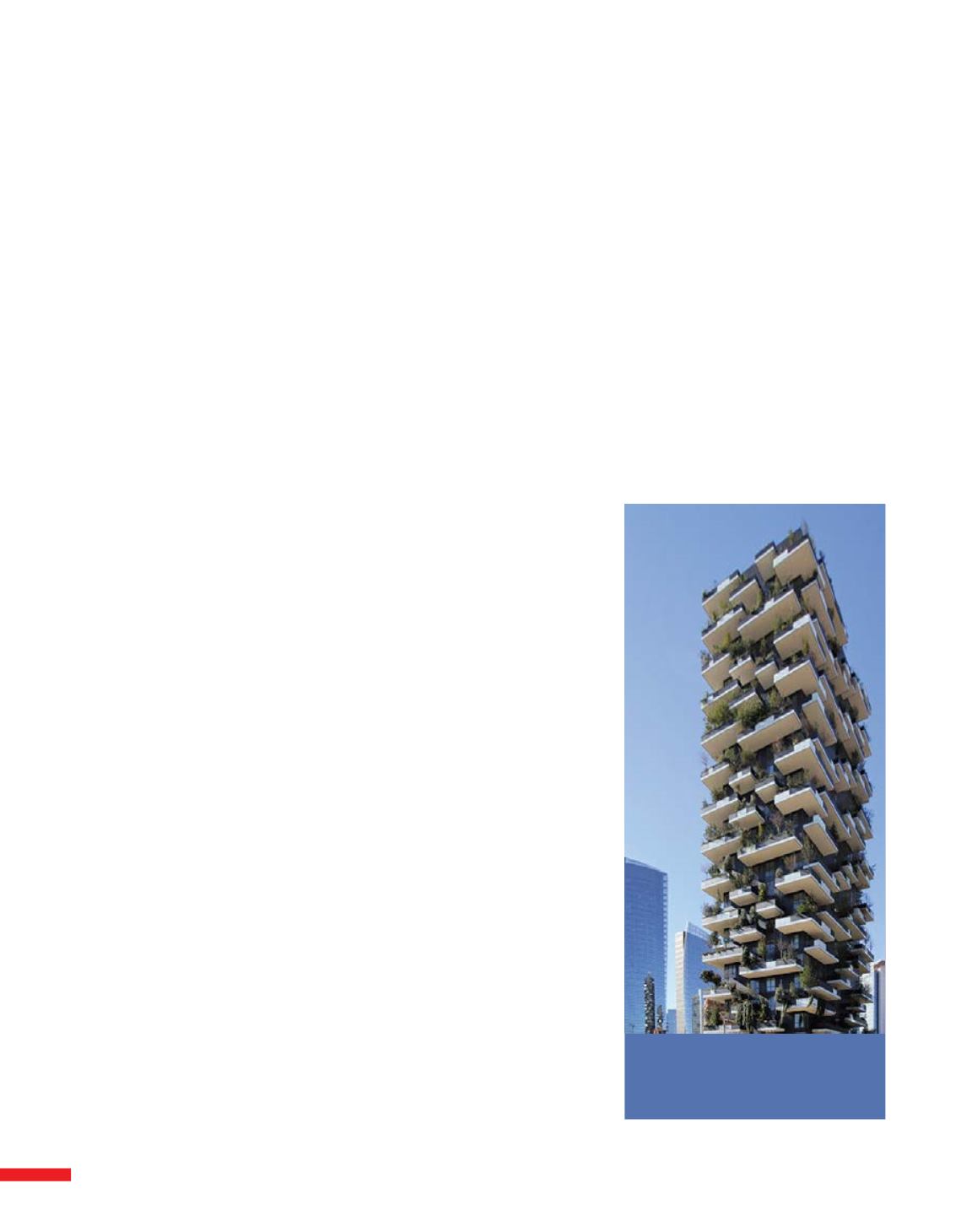

2016
מאי
105
אדריכלות ישראלית
|
מצוקת הדיור
73
|
an opportunity to live in a private house,
while creating an un-oppressive continuum
between Tel Aviv and Rosh Ha-Ayin.
David
Kroll
suggests conditioning
the selling of state owned land on the
construction of affordable housing. If we
adopt the idea for land owned by the Israel
Lands Administration, a large number of the
luxury towers could have been inhabited by
ordinary people, rather than by the super-
wealthy upper echelon.
GL Hearn
from Capita
Real Estate
maintains that the use of only 4% of the
green belt surrounding London along the
M25 could supply the entire metropolitan
housing demand by 2050. A by-product of
such an action may be the halting of the
suburbanization process, while limiting the
spread of construction towards agricultural
areas. Leaving aside the fact that this would
make real estate agencies like Capita
richer, it should be noted that in Israel no
effective action is taken to stop the creeping
annexation of agricultural land, since the
municipalities
themselves
encourage
construction by real estate developers - and
the last thing that interests them is affordable
housing.
Brendan Cuddihy, Arup, and Rupesh
Varsani, Craigewan
claim that proper public
transportation to distressed neighborhoods
would increase their attractiveness, draw
stronger populations, thereby reducing real
estate pressure on areas in demand. This
is not a new solution, of course, and it has
proven itself in many parts of the world.
However, Israelis have not as yet realized
the potential of public transport, which to
this day consists of clumsy outdated buses
and trains.
Pitman Tozer, LB Enfield
and Naked
House suggest purchasing or expropriating
plots or long uninhabited houses for the
redesign of affordable apartments. Not sure
that such action would be acceptable here,
but something of the kind might.
DRMM Architects
suggest reducing and
shortening the constructionprocess adopting
conventional office construction methods -
i.e., by only building core/envelope towers
with basic infrastructure. This method would
enable tenants to gradually design their
apartments according to their ability and
changing needs. A brainwave that would
add human content to synthetic residential
buildings and give residents a real sense of
home.
There is no doubt that not all these ideas
could be implemented either in London or
Israel, but clearly a judicious adopting of
some could flood the apartment market
with affordable housing and neutralize
dependency on sophisticated real-estate
agents whose sharp eyes are fixed on
the rapidly diminishing available land. In
this way, it would be possible to ease the
enormous social gap between the owners
of luxury homes, home-renters with no
economic horizon, and young couples who
go into debt for a lifetime just for the sake of
owning something.
As for construction costs themselves,
here are some worthy ideas:
Self acquisition groups
could reduce
construction costs, allowing a great deal of
industrialized design and construction, not
to mention prior filtering of neighbors - not a
marginal factor that in time saves headaches
and troubles. But, beware the entrepreneurs
who take over, promising mountains where
there aren’t even hills!
This is the place to urge Local Authorities to
waive all unnecessary architectural whims,
such as tiled roofs, decorative artificial
stone walls and arches, just because some
unimaginative amateur dreamed them up
fifty years ago in Kfar Saba, or Kfar Bara…
However, although it may sometimes seem
unnecessarily annoying, implementation
of building permits with regard to details -
particularly those that seem unnecessary
- saves expensive maneuvers and
unnecessary fines.
Problematic plots
in terms of topography
or site are not necessarily disadvantageous.
It obliges architects to think harder for
creative solutions that ultimately prevent
unnecessary gimmicks and tricks in favor of
creating architectural interest.
In general, never save on planning.
Architect’s work hours are the cheapest yet
most effective element in the construction
process.
In this context:
Avoid shortcuts
when
implementing work plans; someone has
invested his soul in them. If necessary,
contact the architect who will do this for you.
Use recognized construction materials,
even if they are more expensive, they will
return their value very quickly with easy
maintenance.
Hire only registered professionals
.
Moonlighters are not cheaper, they are just
moonlighters.
Define your needs
precisely and implement
only necessary details. All the rest might
prevent future development.
Never re-invent the wheel.
Building
technologies that have passed the test
of time are not necessarily banal. They
save the use of ridiculous and expensive
experiments.
Don’t refrain from using
second hand
items
: they inherently add patina to your
synthetic building, and no less important - a
contextual connection to the place.
And apropos place
- anyone who feels they
have to live near the beach, must note that
harsh weather conditions render building
and its maintenance more expensive.
And finally, refrain from
over using
fashionable
elements; they lose their
appeal in time.
















